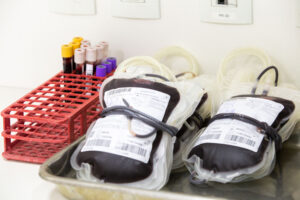Red blood cells can be stored up to 42 days, after which they progressively develop a series of storage lesions—partly because of oxidative stress. A recently published study employed an interdisciplinary approach, incorporating metabolomics, mouse models, and genome-wide association studies to identify genetic factors affecting RBC storage lesions and hemolysis. RBC units (n=13,091) from donors were tested for hemolysis. Those with the highest and lowest measurements (5th and 95th percentiles) of any hemolytic parameter after 42 days of storage were asked to donate a second unit (N=643) to determine the most reproducible metabolites affecting RBC hemolysis. Identified metabolites were all involved in carnitine synthesis and acylcarnitine metabolism. L-carnitine levels were higher with increasing donor age and tended to be higher in males and those of Asian descent. Furthermore, genetic polymorphisms in genes encoding carnitine transport, synthesis, and metabolism contributed to inter-donor differences in carnitine levels in stored RBCs, as indicated by microarray data. Separation of RBCs by age in mice and humans confirmed depletion of L-carnitine and acyl-carnitine pools among older RBCs, along with a simultaneous failure to reacylate chemically damaged lipid membranes. Since carnitine pools are necessary to repair damaged lipid membranes during RBC aging, and supplementation of L-carnitine in stored murine RBCs boosted post-transfusion recovery, future research is needed improve the strategies to prevent hemolysis of stored RBCs.
References:
- D’Alessandro A, Key A, Amireault P, Peltier S, et al. Genetic Regulation of Carnitine Metabolism Controls Lipid Damage Repair Mechanisms and Hemolytic Propensity of Human Red Blood Cells during Aging In Vivo and in Vitro. Blood 2023; 142 (Supplement 1): 4032
- Michel Prudent; How to digest gargantuan data on red cell aging. Blood2024; 143 (24): 2448–2449

